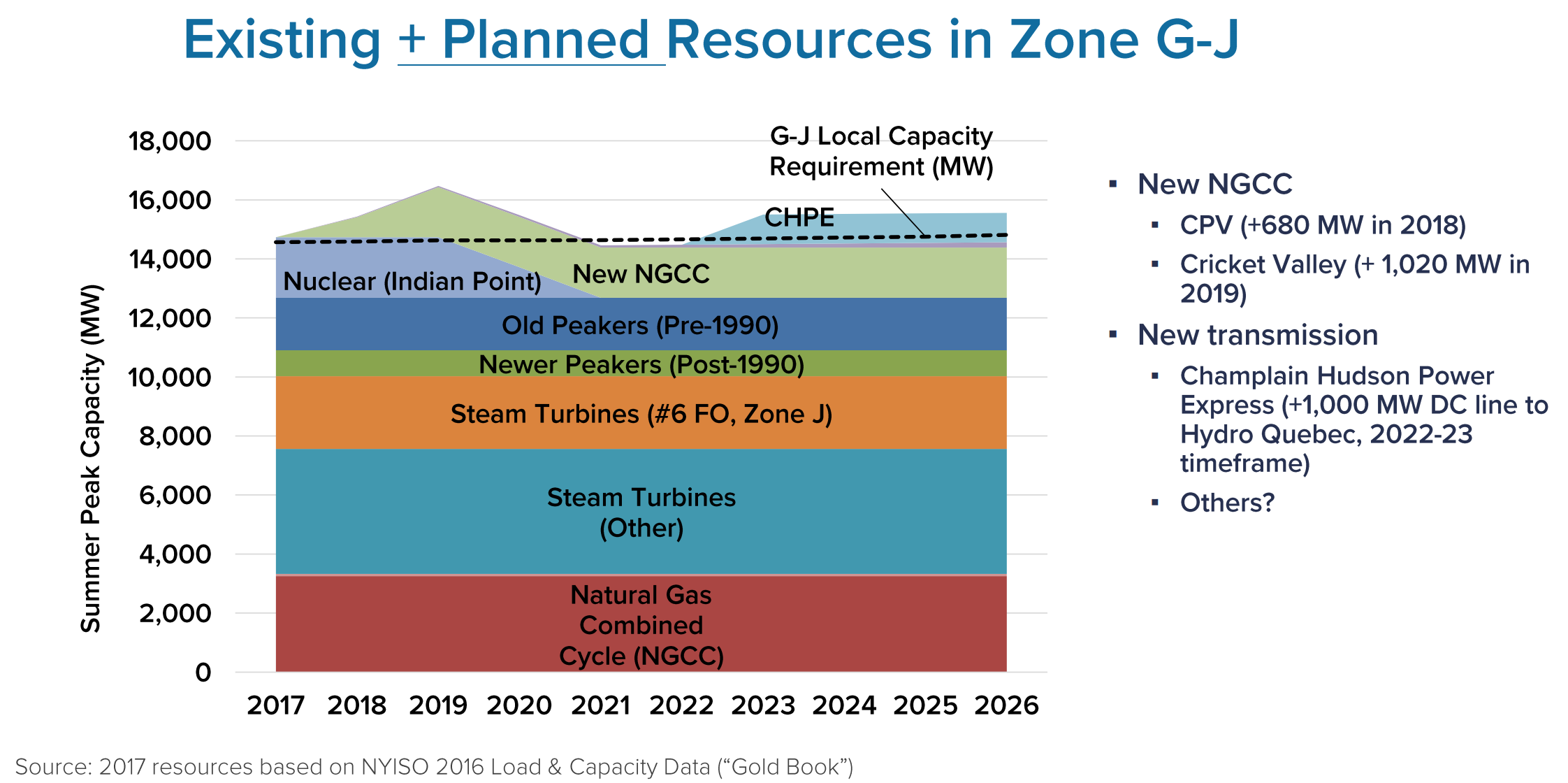The announcement that Indian Point is closing is not new. The Governor made an announcement in January that the aging nuclear plant would close in 2021. Three years from now 2,000 MW of carbon-free base load electricity supply will shutter, while – over a similar period — the State tries to meet its commitment to to have 50% of the state’s supplied energy be “clean” (i.e. low emissions, low carbon) by the year 2030. We recently published an article about what NY’s Clean Energy Standard means to energy buyers. You can read that article here.
These are bold and aggressive targets. There is some debate in the State as to how best to meet these dual commitments — are they best met through increased offshore wind, energy efficiency, storage, or renewable energy investment? What combination of these options is best? It is not yet clear.
Greentech Media published an article about the fact that 2 distinct visions are developing: one that seems to put a lot of focus and investment in advanced storage and another that pins the State’s clean energy hopes on a combination of energy efficiency, renewable energy and some storage. The article, titled When Indian Point Shuts Down, Will Storage or Efficiency Save the Day, includes interesting graphs showing the energy supply forecast over the next several decades. (It should be noted that the study was conducted by Strategen Consulting on behalf of the storage industry.)

You can see the shortfall that is likely to occur in 2021 as a result of Indian Point’s closing. What will fill that gap? Some, not all, of the shortfall will be filled by new natural gas combined cycle power plants (“new NGCC”). NGCC are efficient baseload plants that burn natural gas, which is plentiful (though controversial) thanks to the discovery of the Marcellus shale and new extraction technology. Compared to coal, new NGCC is cleaner burning and efficient.
While it would appear from the graph that the remaining shortfall (after the new NGCC comes online) is not significant, that is not the case. There is still a projected gap between supply and demand. And given the direction that both policy and technology are taking, customers (large and small) could play a major role in expressing their preferences for what will fill that remaining gap—will it be energy efficiency measures? More renewables? Advanced storage? Community solar?.
The State of New York’s Reforming the Energy Vision (REV), which you can read about here, is a major policy initiative that sets broad goals for introducing more renewable energy into the State, and envisions greater involvement by smaller scale purchasers.
One thing is clear: Those of you who buy energy in the State will play a role in deciding the likely outcome of what technologies will fill the Indian Point gap, how the REV vision will play out, etc. Without energy buyers, it is nearly impossible to meet the goals of the Clean Energy Standard, fill the gap left by the shuttering of Indian Point, or implement the bold new energy vision for the State.
What does this mean for energy buyers, policy makers, and innovators?
Your decisions will be essential to ensuring that broad policy goals are met. Maybe you’ll buy a small storage unit for renewables. Maybe you’ll co-invest in solar or wind generation and/or enter into long-term power purchase agreements. Maybe new companies will spring up to come and sell you energy efficiency “solutions.”
1. Get access to good, reliable, forward looking cost and usage data so that you can conduct a robust cost-benefit analysis of any technologies that come your way.
2. Insist on cost and market transparency so as to most effectively weigh your options.
Bottom line for energy and financial buyers: Understand your current usage and cost before committing to anything new. There will be big transformations in the energy industry over the coming decades. You have a vital role to play. Help policy makers, market players, and other customers understand what you need and how best to deliver innovation to you.
